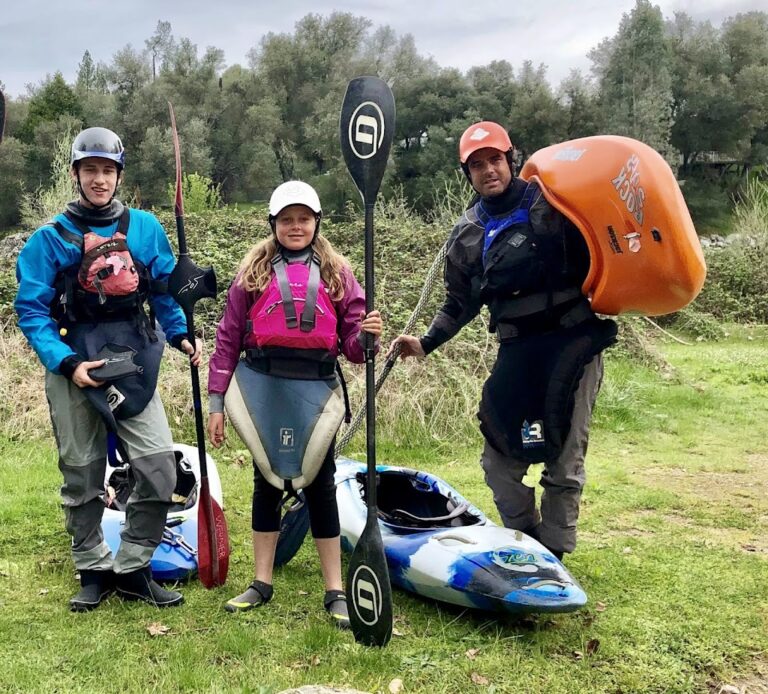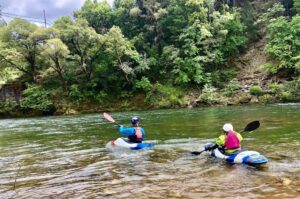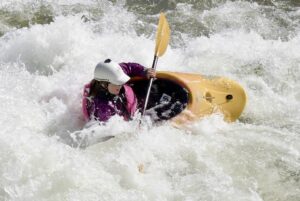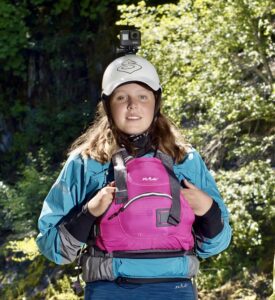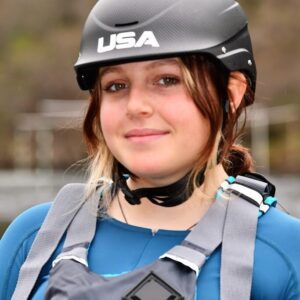Below is my response to an NRS prompt for high water stories . . . . ___________________________________________________
I love big water. The bigger, the better.
But, as I found out in Spring 2019, big water and high water are two different things.
Winter 2019 was one of those huge winters where I live in Lake Tahoe, California. We got 650 inches of snow – that’s almost 55 feet! And though the endless powder days were amazing, I couldn’t wait for spring so that I could get back to kayaking. I was 12 years old then and had already kayaked several big water rivers – the Grand Canyon, the Futaleufu, and the Ottawa. Not only were those rivers a blast, but big water seemed relatively safe, at least to me.
So, when spring break came and our local river (the South Fork American River) was running high, my then-16 year old cousin Athan and I made plans to kayak. To our surprise, very few people were out boating there that spring – the local kayak schools were closed, as were the rafting companies. Unlike big water rivers, we learned that low water rivers that are high due to the melting snowpack have many more safety concerns. The rapids and features are different then they usually are, the river flows through trees and bushes causing strainers, logs or large objects sometimes float by, and the river becomes continuous whitewater without much flat water or many eddies. Because of this, we spent most of the spring on the Class II section, called C2G. Even then, my dad or another adult ran safety for us. We had fun, I guess, but most of the rapids were washed out.
By the time school got out for the summer, we’d been begging to run the upper Class III section, Chili Bar, for almost two months. And on one particular Saturday in June, my dad finally caved. Agreeing not only to let us go, but to let us go on our own. I don’t remember exactly why my dad couldn’t join us on the river that day, but it didn’t matter because we knew we were ready. Not only had we run this stretch of river, albeit at lower water levels, a million times throughout our childhood, but that spring we had adjusted our mindset to the higher water levels. We were also both swiftwater rescue certified, we’d run harder rivers together, and I had boated big water without an adult before (at Keeners the previous summer).
That day the river had risen to 6,000+ cfs. To put that in perspective, the river is normally about 1,200-1,500 cfs, the cut off for commercial trips is 3,000 cfs, and much of that spring had been in the 4,000 cfs range. So it was high, higher than it had been, but not quite flood stage. My parents tell stories of running the South Fork together at 20,000+ cfs in the 1990s.
My mom, however, was apprehensive about letting us go on our own. Not just because of the water levels. My parents also had a long discussion about how perhaps the most dangerous part was having a newly-licensed teenager driving the windy roads to put-in with a kid in the car. As a compromise, my dad drove us to put-in. When we got there, we could see that the water came up further onto the rocky shore then usual and the water had a green-brown color. Other than that, the river looked like the familiar river I grew up on. At least it did at put-in.
We pushed off, without even waving bye to my dad, excited to finally paddle a “real” stretch of river. And to have the river to ourselves.
The first several miles were super fun. We didn’t recognize the classic rapids like Meatgrinder, Race Horse Bend, or 1st, 2nd, and 3rd Threat, but we always knew where we were. And it was a blast to be crashing through the big, continuous wave trains that had magically appeared. The high water made the South Fork feel like we were back on one of those big water rivers that I love so much!
Until we got to Trouble Maker, the usually Class IV rapid. Like the rapids before it, it looked completely different than usual. Unlike the rapids before it, it had not magically become an awesome wave train. This rapid had become a monster. Earlier in the day we had talked about possibly portaging it and at least scouting it. But, it came up on us fast. The eddy where boaters often scout or portage was gone. There was nowhere to stop and make a new plan. We had to run it, sight unseen. None of our usual lines were there. Athan ran first. I ran close behind him. I watched him go upside down.
Before I knew it I was swimming. Trouble Maker at 6,000+ cfs. At 12 years old. Possibly, with no safety ahead of me.
Unbeknownst to us, my dad hadn’t gone home after dropping us off at put-in. He had parked as close to the river as he could, though still high up on the hill, to keep an eye on us at Trouble Maker. And take video. I later watched the video to see what had happened; but in that moment my dad had dropped the phone and all there is is swearing. Also in that moment, my dad had texted the video to my mom. She was worried. In all their years of river-running together she’d never before heard anxiety in his voice. He’s usually calm, even in the midst of chaos.
Unbeknownst to my parents, however, we had stayed calm. I had immediately started self-rescuing. And to my relief, Athan had rolled up and was in his boat right next to me. Though we weren’t visible from the road, we quickly got ourselves and my boat out of the pummeling whitewater and into an eddy. We were safe. But I had lost my paddle and we had many more miles to go. We decided that since there were no more named rapids, we would continue downstream, me using Athan’s paddle and him hand paddling.
Although we were fine and felt confident in our abilities, it took my parents a while to recover. It didn’t help that over the following days, some of their friends (who are very experienced boaters) got themselves into even more serious trouble at Trouble Maker. So, we waited a few weeks for the water levels to come down before going back to Chili Bar on our own. And since then we’ve started carrying at least one spare, break-down paddle, between us.
PS: As always, thanks to my parents for the photos and videos (I do need to be better about turning on the go-pro) and to my mom for editing my blog posts.
